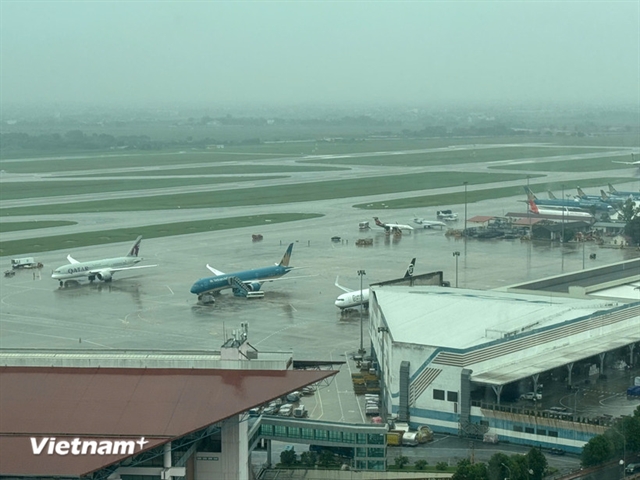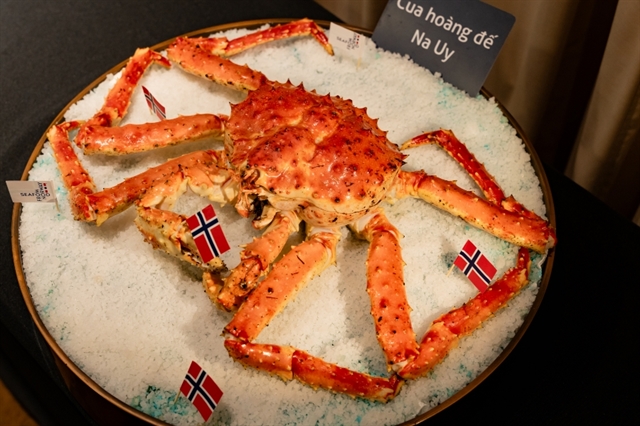 Economy
Economy


|
| The average export price of rice in the first five months of 2025 reached only US$516.4 per tonnes, down 18.7 per cent over the same period in 2024. Photo thiennhienmoitruong.vn |
HCM CITY — Việt Nam’s rice industry is facing a steep drop in export prices, even as shipment volumes climb, underscoring the challenges of a volatile global grain market.
According to the Ministry of Agriculture and Rural Development, the country exported an estimated 4.5 million tonnes of rice in the first five months of 2025, equivalent to 4.5 billion kilogrammes, generating approximately US$2.34 billion.
While the quantity rose by 12.2 per cent year-on-year, export value declined by 8.9 per cent. This sharp contrast resulted from a significant decrease in the average export price, which dropped to around $0.516 per kg, down 18.7 per cent compared to the same period last year.
Domestically, paddy prices across the Mekong Delta remained relatively stable throughout the past week.
In provinces like Vĩnh Long and Tiền Giang, IR 50404 paddy continued to be traded at VNĐ6,600 per kg ($0.26).
OM18 was priced at VNĐ7,500 per kg ($0.295) in Cần Thơ, VNĐ8,100 per kg ($0.319) in Sóc Trăng, and VNĐ7,000 per kg ($0.275) in Tiền Giang.
Jasmine rice reached VNĐ8,400 per kg ($0.331) in Cần Thơ and VNĐ7,100 per kg ($0.28) in Tiền Giang.
ST 25 remained one of the most valuable varieties, holding at VNĐ9,500 per kg ($0.375).
In An Giang Province, fresh IR 50404 paddy was being purchased by traders at VNĐ5,400–5,600 per kg ($0.213–0.221), OM 380 at VNĐ5,200–5,400 per kg ($0.205–0.213), and OM 5451 at VNĐ6,200–6,400 per kg ($0.245–0.253), according to the provincial Department of Agriculture and Environment.
Retail rice prices in An Giang also displayed diversity, depending on type and quality.
Ordinary rice varieties ranged between VNĐ14,000–15,000 per kg ($0.553–0.593), while aromatic long-grain rice imported from Thailand reached VNĐ20,000–22,000 per kg ($0.79–0.87).
Jasmine rice was sold at VNĐ16,000–18,000 per kg ($0.63–0.71), Nàng Hoa at VNĐ21,000 per kg ($0.83), and Japanese rice, along with Hương Lài, was priced at VNĐ22,000 per kg ($0.87).
Varieties like Sóc Thái and Taiwanese fragrant rice also stood at around VNĐ20,000 ($0.79) per kg.
In processing facilities, the price of raw IR 504 rice was between VNĐ7,900–8,000 per kg ($0.312–0.316), with the finished product reaching VNĐ9,500–9,700 per kg ($0.375–0.383).
OM 380 raw rice was sold at VNĐ7,850–8,000 per kg ($0.31–0.316), while processed OM 380 rice fetched VNĐ8,800–9,000 per kg ($0.347–0.355).
By the end of May, Vietnamese farmers had planted roughly 4.22 million hectares of rice.
However, the harvested area shrank to 2.57 million hectares, producing an estimated 17.5 million tonnes of rice, down 2 per cent year-on-year.
The yield per hectare saw a slight improvement to about 6.8 tonnes.
The Philippines remained Việt Nam’s largest rice importer, accounting for 41.4 per cent of the country’s total exports.
Côte d'Ivoire followed with 11.9 per cent, and China with 10.3 per cent.
Despite the volume, the Philippines’ import value dropped 21.8 per cent in the first four months.
In contrast, exports to Côte d'Ivoire surged by 2.7 times, and shipments to China increased by 83.7 per cent.
Bangladesh posted the most dramatic rise — a 515.6-fold increase in value — while Indonesia recorded a sharp 97.9 per cent decline.
The Vietnam Food Association (VFA) reported that Việt Nam’s 5 per cent broken rice is currently quoted at $0.393 per kg, down $0.003 from last week.
A trader in HCM City noted the Philippines is seeking to diversify its supply, posing a potential risk to Việt Nam’s traditional export structure. However, Việt Nam is increasingly targeting high-quality markets like Japan and Europe, where premium rice can command better prices per kg.
India, the world’s largest rice exporter, also saw declines.
Its 5 per cent broken parboiled rice is now priced at $0.380–0.386 per kg, and regular white rice of the same grade at $0.373–0.378 per kg.
The drop has been attributed to a weaker rupee and expectations of another bumper crop, supported by favourable monsoon forecasts.

|
| According to a report from the Ministry of Agriculture and Environment, in the first five months of the year, Việt Nam exported a total of 4.5 million tonnes of rice. Photo vnbusiness.vn |
The Indian government recently increased its minimum support price by only 3 per cent, the smallest margin in five years, to manage domestic stockpiles.
Thailand’s 5 per cent broken rice remains steady at $0.410 per kg. A Bangkok-based trader said overall demand is still quiet, with markets like the Philippines and Indonesia showing limited interest.
On global commodities, soybean prices on the Chicago Board of Trade rose to their highest in a week. July 2025 soybean futures reached $0.854 per kg, after peaking at $0.871 per kg. Corn futures increased to $0.173–0.177 per kg, and wheat futures reached $0.215 per kg.
The rise came after a phone conversation between US President Donald Trump and Chinese President Xi Jinping Trump described the exchange as “very positive,” fuelling hopes for renewed trade cooperation between the two economies.
Coffee, by contrast, saw a global price decline.
Robusta futures on the London exchange dropped by $0.098–0.153 per kg, with July contracts settling at $4.44 per kg and November at $4.288 per kg.
Arabica futures in New York also dipped by US$0.031–0.039 per kg, with July contracts at US$7.89 per kg and March 2026 contracts at $7.64 per kg.
Despite global headwinds, domestic coffee prices in Việt Nam’s Central Highlands rebounded sharply. After several declining sessions, prices increased by VNĐ1,400–1,800 per kg ($0.055–0.071).
The average purchase price reached VNĐ115,700 per kg ($4.57). In key provinces like Đắk Lắk, Gia Lai, and Đắk Nông, coffee was bought at VNĐ115,600–115,700 per kg ($4.56–4.57), while Lâm Đồng trailed slightly at VNĐ115,000 per kg ($4.53).
Analysts believe the Robusta market is technically oversold and may be poised for a short-term rebound, despite ongoing pressure from abundant global supply.— VNS




